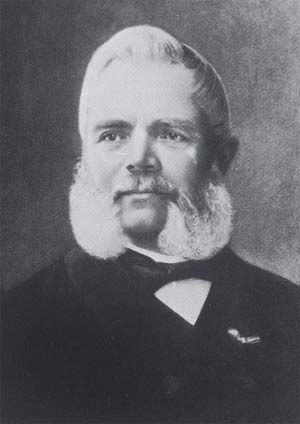
A watch is a timepiece carried or worn by a person. It is designed to keep a consistent movement despite the motions caused by the person's activities. A wristwatch is designed to be worn around the wrist, attached by a watch strap or other type of bracelet, including metal bands or leather straps. A pocket watch is carried in a pocket, often attached to a chain. A stopwatch is a watch that measures intervals of time.

Abraham-Louis Breguet, born in Neuchâtel, then a Prussian principality, was a horologist who made many innovations in the course of a career in watchmaking industry, including the tourbillon. He was the founder of the Breguet company, which is now a luxury watch division of the Swiss Swatch Group.

A clockmaker is an artisan who makes and/or repairs clocks. Since almost all clocks are now factory-made, most modern clockmakers only repair clocks. Modern clockmakers may be employed by jewellers, antique shops, and places devoted strictly to repairing clocks and watches. Clockmakers must be able to read blueprints and instructions for numerous types of clocks and time pieces that vary from antique clocks to modern time pieces in order to fix and make clocks or watches. The trade requires fine motor coordination as clockmakers must frequently work on devices with small gears and fine machinery.

A pocket watch is a watch that is made to be carried in a pocket, as opposed to a wristwatch, which is strapped to the wrist.

Patek Philippe SA is a Swiss luxury watchmaker and clock manufacturer, located in the Canton of Geneva and the Vallée de Joux. Established in 1839, it is named after two of its founders, Antoni Patek and Adrien Philippe. Since 1932, the company has been owned by the Stern family in Switzerland and remains the last family-owned independent watch manufacturer in Geneva. Patek Philippe is one of the oldest watch manufacturers in the world with an uninterrupted watchmaking history since its founding. It designs and manufactures timepieces as well as movements, including some of the most complicated mechanical watches. The company maintains over 400 retail locations globally and over a dozen distribution centers across Asia, Europe, North America, and Oceania. In 2001, it opened the Patek Philippe Museum in Geneva.

The L. A. Mayer Museum for Islamic Art is an art museum in Jerusalem, established in 1974. Located on the corner of HaPalmach Street in Katamon, near the Jerusalem Theatre, it houses Islamic pottery, textiles, jewelry, ceremonial objects and other Islamic cultural artifacts and a rare clocks collection.

In horology, a complication is any feature of a timepiece beyond the display of hours, minutes and seconds. A timepiece indicating only hours, minutes and seconds is known as a simple movement. Common complications include date or day-of-the-week indicators, alarms, chronographs (stopwatches), and automatic winding mechanisms. Complications may be found in any clock, but they are most notable in mechanical watches where the small size makes them difficult to design and assemble. A typical date-display chronograph may have up to 250 parts, while a particularly complex watch may have a thousand or more parts. Watches with several complications are referred to as grandes complications.

Breguet is a Swiss luxury watch, clock and jewelry manufacturer founded by Abraham-Louis Breguet in Paris in 1775. Headquartered in L'Abbaye, Switzerland, Breguet is one of the oldest surviving watchmaking brands and a pioneer of numerous watchmaking technologies such as the tourbillon, which was developed into a practical solution by Abraham Breguet in 1801. Abraham Breguet also invented and produced the world's first self-winding watch in 1780, as well as the world's first wristwatch in 1810.

Antoni Norbert Patek was a Polish pioneer in watchmaking and the creator of Swiss watchmaker company Patek Philippe & Co., as well as a Polish independence fighter and political activist.
Franciszek Czapek was a master watchmaker and partner of Antoni Patek in Patek, Czapek & Cie.
The Patek Philippe Calibre 89 is a commemorative pocket watch created in 1989, to celebrate the company's 150th anniversary. Declared by Patek Philippe as "the most complicated watch in the world" at the time of creation, it has 33 complications, weighs 1.1 kg, exhibits 24 hands and has 1,728 components in total, including a thermometer, and a star chart. Before Calibre 89, Patek Philippe Henry Graves Supercomplication had been the world’s most complicated timepiece ever assembled with a total of 24 different functions.
Roger Dubuis is a Swiss watch manufacturer of luxury watches based in Geneva, Switzerland. The company was founded by Roger Dubuis and Carlos Dias in 1995.
The "Watch Valley" covers all the Swiss Jura Arc, from Geneva to Basel, and is the primary location of the Swiss watch-making industry.
Manufacture Jaeger-LeCoultre SA, or simply Jaeger-LeCoultre, is a Swiss luxury watch and clock manufacturer founded by Antoine LeCoultre in 1833 and is based in Le Sentier, Switzerland. Since 2000, the company has been a fully owned subsidiary of the Swiss luxury group Richemont.

Sir David Lionel Goldsmid-Stern-Salomons, 2nd Baronet was a British scientific author, barrister and pioneer of road transport.
The Patek Philippe Henry Graves Supercomplication is one of the most complicated mechanical pocket watches ever created. The 18-karat gold watch has 24 complications and was assembled by Patek Philippe. It was named after banker Henry Graves Jr. who supposedly commissioned it out of his desire to outdo the Grande Complication pocketwatch of American automaker James Ward Packard. The two were both at the top of the watch collecting world, regularly commissioning innovative new timepieces.
Czapek & Cie. is a Swiss watch brand named after the Polish watchmaker François Czapek.

Charles Oudin is one of the oldest French horology firms. It was founded in Paris at the end of the 18th century by Jean-Charles Oudin, who came from a family of clockmakers in Northwest France. There were four generations of Oudins who were clockmakers, as of the mid 18th century, first in the Meuse region and later, in Paris. Several members of the Oudin family worked for the master watch and clockmaker Abraham-Louis Breguet.
Seth Glanville Atwood was an American industrialist, community leader, and horological collector. He was the chairman and president of Atwood Vacuum Machine Company, one of the world's largest manufacturers of automobile body hardware, and a long-time leader of the Atwood family's business which involved in manufacturing, banking and hotel industries, with over 2,500 employees. In addition, Atwood was a director of the Illinois Manufacturers' Association, and had served in the Illinois Chamber of Commerce and the Graduate School of Business at the University of Chicago.











